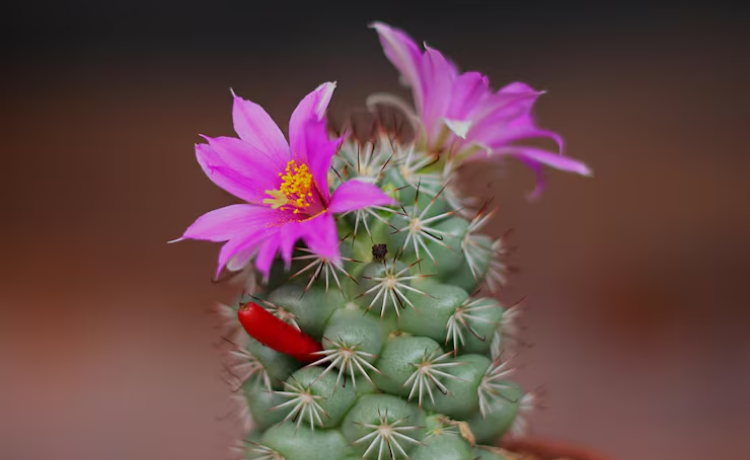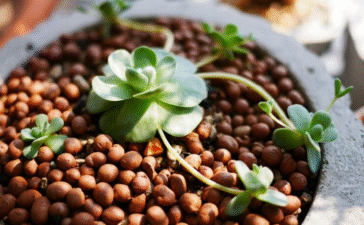Cactus flowers have captivated gardeners and home decorators alike with their stunning and often unexpected beauty. These resilient plants, known for their ability to thrive in harsh conditions, produce some of the most vibrant and delicate blooms in the plant kingdom. Their rising popularity in home gardens and minimalist interior design is a testament to their unique charm and low-maintenance appeal. This guide offers expert advice, practical tips, and deep insights into the world of cactus flowers. You will learn about the different types of cactus blooms, how to care for them to ensure they flourish, and the rich symbolism they carry. By the end, you’ll have all the knowledge you need to start your own cactus garden and enjoy these magnificent blossoms.
What Are Cactus Flowers?
Cactus flowers are the reproductive blooms produced by plants in the Cactaceae family. These flowers are often large, colorful, and surprisingly intricate, emerging from the spiny, fleshy stems of the cactus. They play a crucial role in the plant’s life cycle, attracting pollinators like bees, bats, and hummingbirds to facilitate fertilization and seed production.
The world of gardening values cactus flowers for their dramatic visual appeal and the sense of accomplishment that comes with coaxing these desert dwellers to bloom. Their diversity is vast, with popular species like the Prickly Pear, the night-blooming Echinopsis, and the majestic Saguaro each offering a unique floral display.
Types of Cactus Flowers
The variety within the cactus family is immense, and so is the diversity of their flowers. Each species has its own distinct bloom, differing in color, size, shape, and blooming habit.
Common Varieties of Cactus Flowers
Prickly Pear Cactus Flowers (Opuntia)
Prickly Pear cacti are famous for their large, showy flowers that come in shades of yellow, orange, red, and magenta. These blooms typically appear in late spring and early summer, perched atop the plant’s flat, paddle-like stems. After pollination, these flowers develop into the well-known prickly pear fruit, or “tuna.”
Echinopsis (Torch Cactus)
Echinopsis, often called the Torch Cactus or Sea Urchin Cactus, is celebrated for its enormous, trumpet-shaped flowers. These blooms can be as large as the plant itself and come in a dazzling array of colors, including white, pink, red, and yellow. Many Echinopsis species are nocturnal bloomers, with their flowers opening at dusk and lasting only a single night, releasing a sweet fragrance to attract nighttime pollinators.
Saguaro Cactus Flowers (Carnegiea gigantea)
The Saguaro cactus, an icon of the American Southwest, produces the state wildflower of Arizona. Its waxy, white flowers bloom at the top of its towering stems and arms during late spring. These flowers open at night and remain open through the next day, primarily attracting bats for pollination. Their creamy white color and sweet scent are unmistakable.
Other Notable Cactus Flowers
Many other cacti produce noteworthy flowers. The Christmas Cactus (Schlumbergera) blooms in winter with tubular flowers in pink or lilac. The Pincushion Cactus (Mammillaria) features a charming ring of small, pink or yellow flowers around its crown. The Orchid Cactus (Epiphyllum) offers breathtaking, orchid-like blooms that make it a favorite among houseplant enthusiasts.
Cactus Flower Care: How to Grow and Maintain Them
Proper care is essential to encourage your cactus to produce its spectacular flowers. Understanding their native habitat provides the best clues for their needs.
Ideal Growing Conditions for Cactus Flowers
Most cacti thrive in conditions that mimic their desert origins. This means providing well-draining soil, often a sandy mix specifically formulated for cacti and succulents. This type of soil prevents water from sitting around the roots, which is the most common cause of root rot.
Sufficient light is another critical factor. Most cactus species require at least six hours of direct sunlight per day to have enough energy for blooming. A south-facing window is often the best location for indoor cacti. If your plant starts to stretch or look pale, it may not be receiving enough light.
Watering and Fertilizing Cactus Flowers
Overwatering is the biggest danger to a cactus. The rule of thumb is to water thoroughly when the soil is completely dry to the touch, and then let it dry out again before the next watering. During the dormant winter months, reduce watering significantly, sometimes to as little as once a month.
To encourage blooms, use a low-nitrogen, high-potassium fertilizer during the spring and summer growing season. A formula designed for cacti or tomatoes works well. Fertilize according to the package directions, typically every few weeks, but cease fertilizing in the fall and winter to allow the plant its natural rest period.
Temperature and Humidity Considerations
Cacti generally prefer warm, dry conditions. They are most active when temperatures are between 70-85°F (21-29°C). While they can tolerate high heat, many species need a cool, dry period in the winter to trigger blooming in the spring. Temperatures between 45-55°F (7-13°C) are often ideal for this dormancy.
Protect your cacti from frost, as most are not cold-hardy and can be permanently damaged by freezing temperatures. Low humidity is generally preferred, making them well-suited for typical indoor environments.
Cactus Flowers Blooming: When and How They Flower
The blooming of a cactus is a much-anticipated event, often requiring patience and the right conditions.
Cactus Flower Blooming Seasons
Blooming times vary widely among cactus species. Many, like the Prickly Pear, bloom in late spring or early summer. Others, such as the Christmas and Thanksgiving cacti, are known for their winter blooms. The age of the cactus is also a factor; some species won’t flower until they are several years old and fully mature. The seasonal change, particularly the shift in light duration and temperature, is a primary trigger for the blooming cycle.
How Long Do Cactus Flowers Bloom?
The lifespan of a cactus flower can be fleeting. Some Echinopsis flowers last less than 24 hours, opening at night and wilting by the next afternoon. Other species, like Mammillaria, may have flowers that last for several days. The overall blooming period for a plant can last for several weeks, with flowers opening in succession.
Boosting Cactus Flower Blooms
To encourage your cactus to bloom, ensure it has a proper winter dormancy period. This means cooler temperatures, reduced watering, and no fertilizer. This rest period allows the plant to store energy for flower production. Once spring arrives and you resume regular watering and feeding, you are more likely to be rewarded with blooms. Additionally, making sure the plant is not root-bound and has adequate sunlight will significantly increase its chances of flowering.
Symbolism and Meaning of Cactus Flowers
Beyond their physical beauty, cactus flowers carry deep symbolic meaning across various cultures.
Cultural and Emotional Significance of Cactus Flowers
The cactus plant itself is a symbol of endurance, strength, and resilience, as it thrives in environments where other plants cannot survive. The flower, emerging from such a tough and spiny plant, represents the beauty that can arise from adversity. In some cultures, a cactus flower is a symbol of maternal love, given its protective nature.
Cactus Flowers in Spiritual and Emotional Context
Spiritually, the cactus flower can represent personal growth and the ability to overcome life’s challenges. Its bloom is a reminder that even after periods of hardship, it is possible to blossom and find beauty. Gifting a blooming cactus can be a powerful message of encouragement, signifying that the recipient has the strength to endure and will ultimately flourish.
Propagating Cactus Flowers: How to Grow More Cactus Plants
One of the joys of growing cacti is how easily many of them can be propagated, allowing you to create new plants from your existing collection.
How to Propagate Cactus Flowers From Cuttings
Propagating from stem cuttings is a common and effective method. Using a clean, sharp knife, cut a healthy stem or pad from the parent plant. Allow the cutting to sit in a dry, shaded area for several days to a week, until the cut end forms a callus. This prevents rot when planted.
Once calloused, plant the cutting about an inch deep in a pot filled with cactus soil. Water it sparingly until roots begin to form, which can take a few weeks to a few months. You can check for root growth by gently tugging on the cutting; resistance means roots have formed.
Propagation Through Seeds
Growing cacti from seeds is a slower but rewarding process. Plant the seeds in a shallow tray with a fine cactus soil mix. Lightly cover them with sand or fine grit. Keep the soil moist (but not wet) and warm, often by covering the tray with plastic wrap to create a mini-greenhouse effect. Germination can take anywhere from a few weeks to several months.
Cactus Flowers in Landscape and Home Decor
The architectural forms of cacti and the brilliant colors of their flowers make them excellent choices for both outdoor landscapes and indoor decoration.
Using Cactus Flowers in Landscaping
In landscaping, cacti are stars of xeriscapes and desert-themed gardens. Their low water needs make them an environmentally friendly choice in dry climates. Combine different cactus species to create variety in height, shape, and texture. Planting them alongside other drought-tolerant plants like succulents and ornamental grasses can create a vibrant and low-maintenance garden.
Decorating with Cactus Flowers Indoors
Indoors, cacti add a touch of modern, minimalist style. Plant them in simple, stylish pots made from materials like terracotta, ceramic, or concrete to complement their natural aesthetic. A collection of small cacti on a sunny windowsill or a single large statement cactus in a living room can create a dramatic focal point. When they bloom, they provide a surprising and beautiful splash of color.
Medicinal Uses of Cactus Flowers
Some cactus species and their flowers have been used in traditional medicine for centuries.
Health Benefits and Traditional Uses
The flowers and pads of the Prickly Pear cactus, for example, are known to have anti-inflammatory properties. In folk medicine, they have been used to treat wounds, digestive issues, and skin ailments. The fruit is rich in antioxidants, vitamins, and minerals, contributing to overall health.
Scientific Research on Cactus Flowers
Modern scientific research is beginning to explore these traditional claims. Studies have looked into the potential of cactus extracts for managing blood sugar levels, reducing cholesterol, and providing antioxidant benefits. While more research is needed, the healing properties of these plants hold promise.
Also Check: “flowered agave“
A Lasting Bloom
Cactus flowers are a remarkable example of nature’s artistry. They combine rugged resilience with delicate beauty, making them a rewarding plant for any gardener. Their low maintenance needs and stunning floral displays ensure they will continue to be a beloved choice for gardens and homes.
Now that you’re equipped with the knowledge to grow and care for these amazing plants, it’s time to start your own cactus journey. We encourage you to explore the different varieties and find the ones that speak to you.
Frequently Asked Questions
Do Cactus Flowers Need a Lot of Sunlight?
Yes, most cactus species require a significant amount of sunlight to thrive and bloom. A minimum of six hours of direct, bright sunlight per day is recommended. A south-facing window is ideal for indoor cacti. If a cactus does not receive enough light, it may become etiolated (stretched and pale) and will be unlikely to flower.
Why Is My Cactus Not Blooming?
Several factors can prevent a cactus from blooming. The most common reasons include insufficient light, improper watering, and the lack of a winter dormancy period. The age of the plant also matters, as many cacti need to reach maturity before they can flower. To encourage blooming, ensure your plant gets plenty of sun, is watered correctly, and experiences a cool, dry rest period during the winter.
Can I Grow Cactus Flowers Indoors?
Absolutely. Many cactus species are well-suited for indoor growing, provided they have access to enough light. Smaller species like Mammillaria or Rebutia are popular choices for houseplants. Placing them in a sunny window and providing the right care will allow you to enjoy their beautiful flowers inside your home.
How Do I Protect My Cactus Flowers From Pests?
Common pests that affect cacti include mealybugs, spider mites, and scale. Inspect your plants regularly for any signs of infestation. If you find pests, you can often remove them by dabbing them with a cotton swab dipped in rubbing alcohol. For larger infestations, a horticultural soap or neem oil spray can be effective. Ensuring good air circulation around your plants can also help prevent pest problems.












